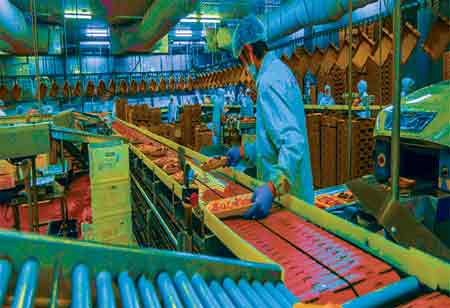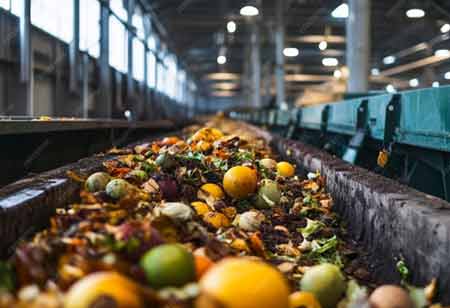THANK YOU FOR SUBSCRIBING
Be first to read the latest tech news, Industry Leader's Insights, and CIO interviews of medium and large enterprises exclusively from Food and Beverage Tech Review
How Technology is Shaping the Future of Meat and Poultry Processing
Advancements in technology are driving the future of meat and poultry processing, improving efficiency, safety, sustainability, and automation.

By
Food and Beverages Tech Review | Wednesday, October 22, 2025
Stay ahead of the industry with exclusive feature stories on the top companies, expert insights and the latest news delivered straight to your inbox. Subscribe today.
Fremont, CA: The meat and poultry processing industry, a vital component of global food systems, is undergoing a technological revolution. Technology has driven change as consumer demands evolve and the industry faces labor shortages and environmental concerns. From automation and robotics to sustainability innovations, the meat and poultry processing sector embraces new technologies that increase efficiency, improve safety, and reduce environmental impacts. This article looks into the current trends and innovations in the industry, giving a glimpse of its future.
Automation and Robotics: Streamlining Operations
Due to labor shortages, the meat and poultry processing industry is increasingly utilizing automation and robotics. Robots are being used in cutting, deboning, and packaging stages to handle repetitive tasks. These technologies improve efficiency by speeding up processing times and enhancing worker safety by minimizing the need for hazardous tasks. Additionally, robotics ensure consistent product quality due to their greater precision and accuracy than humans.
Artificial Intelligence and Machine Learning: Enhancing Quality Control
Artificial intelligence and machine learning are revolutionizing meat and poultry processing by improving quality control. AI-powered systems monitor production lines, identify defects, and ensure safety and quality standards. Machine vision systems can detect contamination, spoilage, and defects, inspecting products faster than human workers. AI optimizes processing schedules and predicts maintenance needs, minimizing downtime and improving operational efficiency. Overall, these advancements are transforming the meat and poultry industry.
Sustainability and Waste Reduction Technologies
The meat and poultry industry is increasingly adopting technology to enhance sustainability and reduce waste and carbon footprints. Waste reduction technologies, such as recycling by-products like bones, fat, and organs, are used for pet food, fertilizers, and bioenergy production. Water and energy efficiency improvements are also reducing the environmental impact of processing plants. A notable trend is the development of plant-based meat substitutes, aiming to reduce reliance on animal-based products and address concerns over resource consumption and animal welfare.
Blockchain and Traceability: Increasing Transparency and Food Safety
Blockchain technology is gaining popularity in meat and poultry to improve traceability and food safety. It provides a digital ledger that records every step of the meat's journey from farm to table, allowing processors to track animal movement, monitor health protocols, and ensure products meet regulatory standards. This traceability reduces the risk of contamination or foodborne illness outbreaks by providing a clear record of the entire supply chain. Blockchain also enables efficient recalls in case of contamination, reducing waste and protecting consumers.
Innovations in Packaging and Shelf Life Extension
Packaging technology is advancing to extend the shelf life of meat and poultry products and reduce food waste. Vacuum-sealing, modified atmosphere packaging, and edible coatings improve preservation while maintaining quality. These solutions reduce exposure to oxygen, moisture, and bacteria while improving the recyclability and sustainability of packaging materials to address plastic waste concerns.
I agree We use cookies on this website to enhance your user experience. By clicking any link on this page you are giving your consent for us to set cookies. More info







